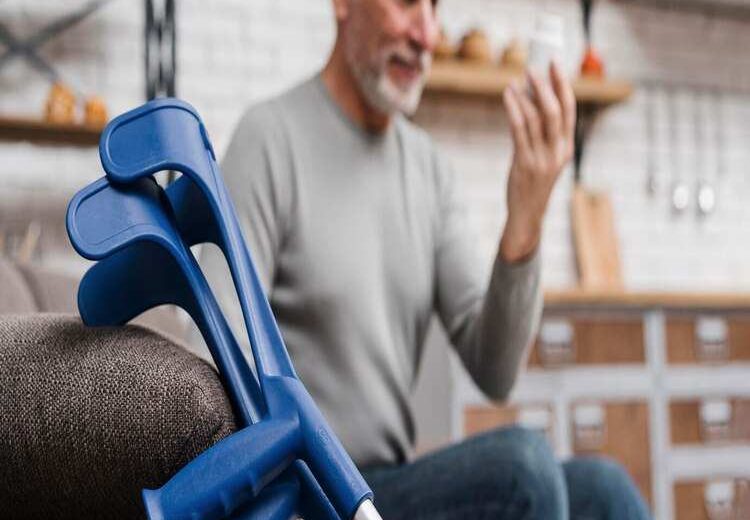
Muscle wasting, also called muscle atrophy, is a condition causing a progressive loss of muscle mass and strength. It is not merely a result of aging but can be caused by various diseases, injuries, or a lack of physical activity. Muscle wasting significantly impacts quality of life, mobility, and independence. While conventional treatments exist, the use of stem cells for muscle repair is a regenerative alternative to combat muscle wasting!
What is Muscle Wasting?
Table of Contents
🦴 Muscle wasting involves the thinning and weakening of skeletal muscles, defined by reduced muscle tone, fatigue, and a visible decrease in muscle size. This degeneration occurs when muscle proteins break down more rapidly than they are made, leading to a net loss of muscle tissue.
While many people associate muscle wasting in older adults, it can happen at any age, especially in younger people post-surgery and with chronic illnesses.
Who is at Risk of Muscle Wasting?
Muscle wasting can affect anyone, but certain people are more vulnerable. These include:
- 👵 Elderly individuals, particularly those with sedentary lifestyles
- 🩺 People with chronic illnesses such as cancer, HIV/AIDS, or chronic obstructive pulmonary disease (COPD)
- ⚕️ Patients recovering from surgery or injury who are immobilized for long periods
- 🧠 Individuals with neurodegenerative diseases like amyotrophic lateral sclerosis (ALS) or multiple sclerosis (MS)
Muscle Wasting Causes
- Several factors can contribute to muscle wasting:
- ⚠️ Disuse atrophy: Caused by physical inactivity or bed rest
- 🥗 Malnutrition: Inadequate protein and calorie intake impairs muscle maintenance
- 🧠 Neurological disorders: Conditions like ALS or stroke disrupt muscle-nerve communication
- 🩸 Chronic illness: Cancer cachexia (wasting and weakness in your body from a chronic illness) and or organ failure can trigger systemic muscle loss
- 🛡️ Autoimmune diseases: Inflammatory conditions like rheumatoid arthritis may contribute to muscle deterioration
Symptoms of Muscle Wasting
Early detection and intervention are key to slowing the progression of muscle wasting and improving patient outcomes.
Treatments Used for Muscle Wasting
Treatment for muscle wasting typically targets the underlying cause and includes:
- Physical therapy and exercise: Resistance training and aerobic activities can help rebuild strength and endurance
- Nutritional support: High-protein diets and supplementation support muscle synthesis
- Medication: Anabolic steroids, anti-inflammatory drugs, or hormones may be prescribed in certain cases
- Electrical stimulation: Used in immobilized patients to stimulate muscle contractions
- Surgery or orthotics: In cases involving musculoskeletal deformities or injuries
Despite these interventions, many individuals do not fully regain lost muscle function. This has led researchers to explore regenerative approaches, including stem cell therapy for the treatment of muscle wasting.
Using Stem Cells to Repair Muscles
One of the newest treatments for combating muscle wasting is the use of stem cells for muscle repair. Stem cells possess the unique ability to differentiate into various cell types, including muscle cells, making them an attractive option for regenerative medicine.
In particular, bone marrow-derived stem cells—specifically autologous stem cells, which are harvested from the patient’s body are used for their ability to repair or replace damaged muscle tissue. These cells help the body form new muscle fibers and secrete growth factors that promote healing and reduce inflammation. ProgenCell utilizes stem cells harvested from your own body, thereby eliminating cell rejection and host-induced infections.
Muscle wasting is a debilitating condition that affects millions worldwide, reducing mobility, independence, and overall well-being. Traditional treatments aim to slow progression and maintain existing muscle mass, but often fall short in reversing the damage.
Therapies utilizing stem cells for muscle repair provide a regenerative alternative, particularly for patients who are unresponsive to conventional treatments. In contrast, the use of stem cells and muscle wasting treatment using autologous bone marrow-derived stem cells restores damaged muscle and improves the quality of life. When used in conjunction with your current regimen, stem cells can enhance muscle repair and improve outcomes.
If you or someone you know is experiencing muscle fatigue, balance issues, difficulties with daily activities, or feels that their muscles are shrinking, contact ProgenCell for a virtual consultation and start living life on your terms!









